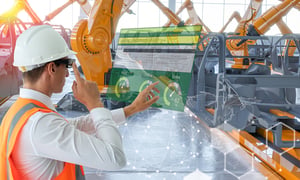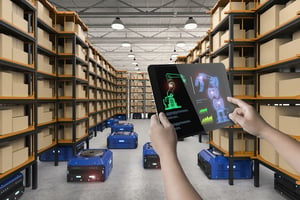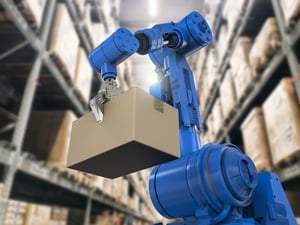At its core, Industry 5.0 is about people working alongside robots and smart machines. That may evoke memories of movies about robots taking over the world. But at its core, robotics is about practicality. Robots will help humans work more efficiently and Industry 5.0 is about the co-existing and co-producing that will occur between humans and machines.
Skills Gap
Industry 5.0 is inevitable. The manufacturing industry has some challenges to face moving forward which make industry 5.0 an attractive proposition in many ways. One of the major challenges for the manufacturing industry is a shortage of skilled labor entering the manufacturing workforce. This shortage is a reality and the numbers are truly challenging.
 There are currently more open positions than there are job seekers to fill them and employers are finding it difficult to find workers with the right skills to fill open positions. The skills gap is affecting the ability for employers to fill open positions.
There are currently more open positions than there are job seekers to fill them and employers are finding it difficult to find workers with the right skills to fill open positions. The skills gap is affecting the ability for employers to fill open positions.
The skills gap is a result of the large number of baby boomers who are retiring. Many boomers are leaving behind positions with specialized skills and there are fewer workers to fill the gaps they are leaving in the workforce.
Labor shortages create the perfect conditions for Industry 5.0 to permeate manufacturing. Integrating robots into manufacturing will streamline automation and create a true human-robot collaboration. When there are less humans, having that collaboration will continue to make manufacturing operations work in an efficient and productive way, despite the changes in work force numbers.
Humans Innovate, Robots Execute
In the manufacturing world, robots usually perform monotonous work, such as welding and painting in car factories and loading and unloading heavy  materials in warehouses. With the diminishing workforce it will be more important than ever that humans develop a skill set that is less about repetitive tasks and more about evolved and open-minded thinking. Adopting a mindset of constant education and creating a culture of learning will keep humans engaged. In fact, there are some who believe that this education should no longer be reliant upon leaders to administer. Instead, humans should all be self-starters who continue to teach themselves and to grow within their roles alongside robots. Robots will compliment this adopted mentality.
materials in warehouses. With the diminishing workforce it will be more important than ever that humans develop a skill set that is less about repetitive tasks and more about evolved and open-minded thinking. Adopting a mindset of constant education and creating a culture of learning will keep humans engaged. In fact, there are some who believe that this education should no longer be reliant upon leaders to administer. Instead, humans should all be self-starters who continue to teach themselves and to grow within their roles alongside robots. Robots will compliment this adopted mentality.
Technology Will Not Stop
Technology is not going to slow down. If anything, technology will probably increase in speed and intensity as the years move forward. By embracing technology, humans in manufacturing will ultimately benefit. Industry 5.0 will create an environment of collaboration that will impact efficiencies and results in most aspects of manufacturing.
 One of the most important parts of Industry 5.0 will be the human machine interface. Robots will learn from humans and humans will benefit from robots performing tasks that humans can’t or don’t want to perform within a manufacturing operation.
One of the most important parts of Industry 5.0 will be the human machine interface. Robots will learn from humans and humans will benefit from robots performing tasks that humans can’t or don’t want to perform within a manufacturing operation.
Combining human intelligence with the cognitive abilities of a technologically advanced work partner is a powerful combination, destined to produce great results.
Overall, the effects of Industry 5.0 should be positive. Adjustments are necessary but the potential benefits are there. The collaboration of robots and humans should strengthen a sector that is floundering with humans alone in place. With the help of robotic partners, manufacturing can once again stand strong.
Radwell International offers products and services that support all aspects of industrial automation operations.
To learn more about Radwell International


